The Guide to Managing Screen Time for ADHD Kids
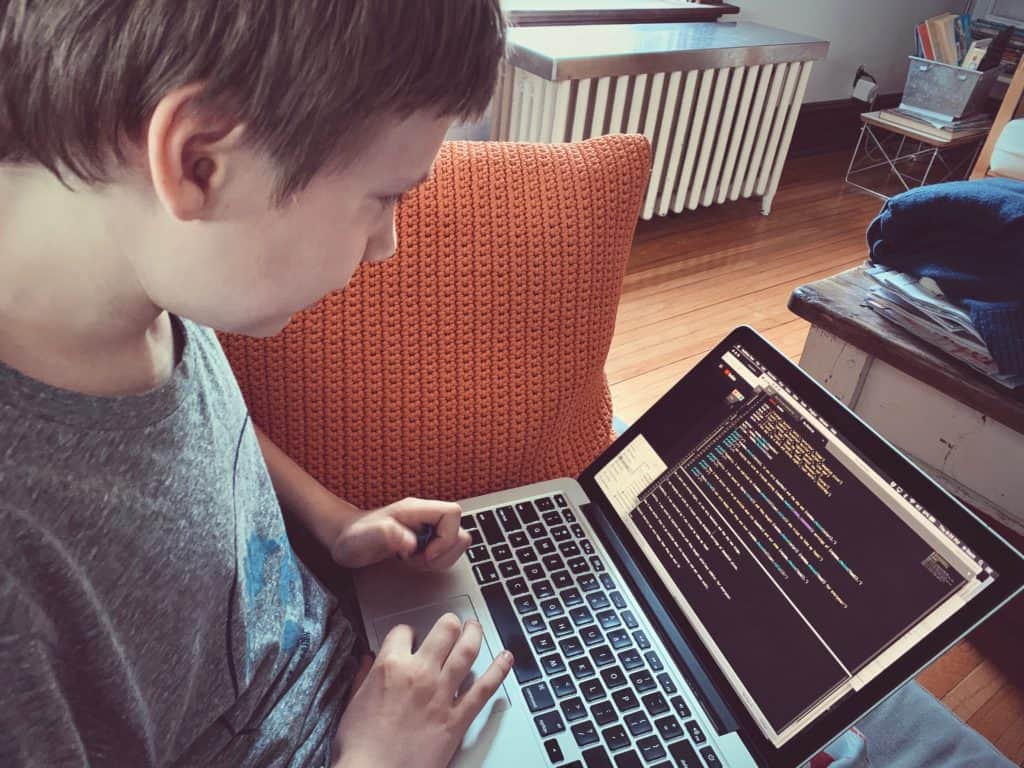
There is no one size fits all solution for reducing screen time for ADHD kids. Rather, you must arm yourself with information, consider all the options, get input from your ADHD kiddo and then come up with a plan.
Setting screen time limits is a complicated issue, with many layers of things to consider.
Thats because screens affect each of us differently. Some kids can play video games for an hour and exit off with no problem.
Other kids have to be physically pulled away from their device down.
Some kids are calmed by screens, while some get even more hyperactive.
If you are reading this article, most likely you’d like to make a change. for YOUR KID.
This post will not tell you exactly what to do with your kiddo. Rather, it has a lot of food for thought so you more effectively make decisions about managing screen time for your own unique family.
You’ll want to read all the way to the end to see the list of books and resources that have been so helpful.
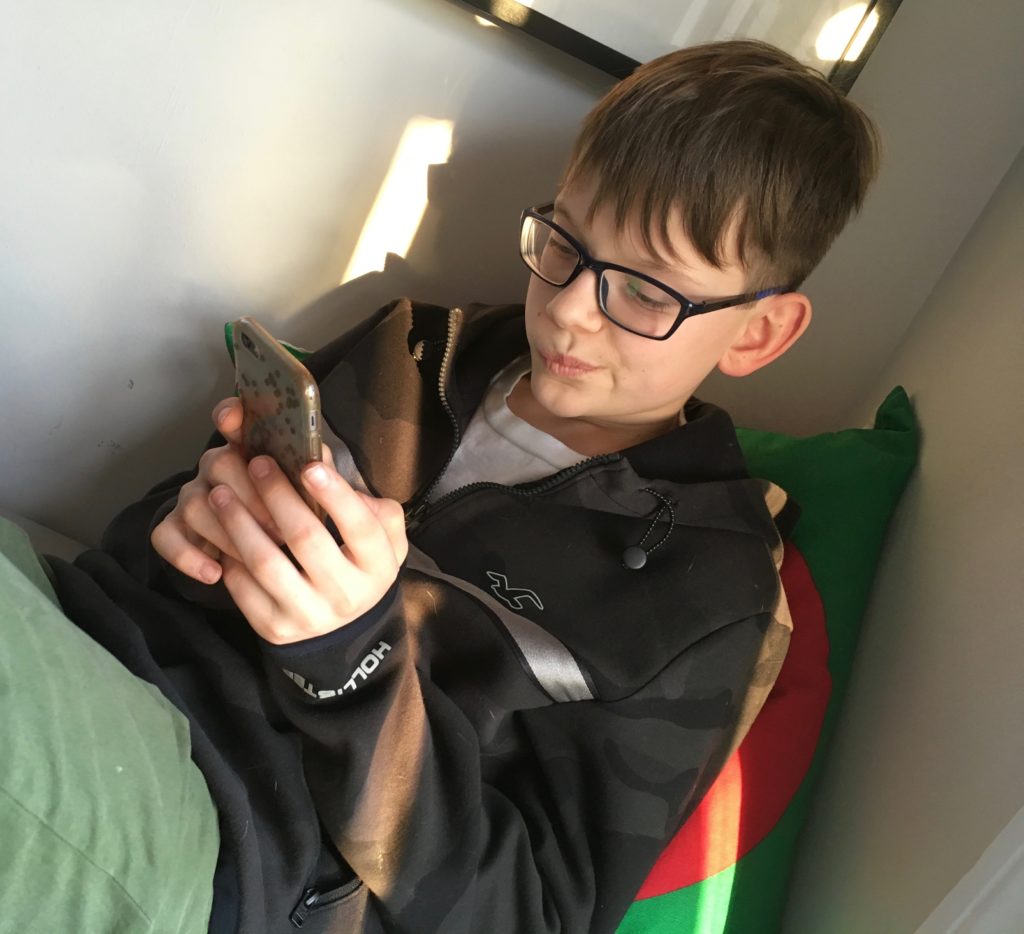
Identifying the problem with screen time
Are screens a problem for your ADHD Kiddo?
It is the rare parent who can answer a definitive, “NO!” to that question.
You are a smart, responsible parent to be curious about how screens are affecting your kids.
This is no longer just about how many hours of TV to watch or how many minutes of video game time your kids should be playing.
Saying no completely to technology is not an option for school-aged children, as more and more schools are going, “1 to 1” giving kids laptops for the entire day!
But throwing in the towel or saying, “Well that’s just kids these days, they spend hours playing video games. It’s what everyone is doing.” are not helpful answers either.
Here are some questions to help guide your thinking about screen time.
- Do you feel a lack of family connection?
- Is your child exhibiting new, unfavorable or anti-social behaviors?
- Is your child loosing sleep because they are on a screen?
- Are they sneaking screen time even when there are clear limits set?
- Are there constant arguments about their phone?
- Do they have to be physically dragged off a screen?
- Is their physical exercise severely limited because they spend too much time on a screen?
We have to write the book on screens
No generation before us has had to deal with these issues, so in a way, we have to write the book on it.
Screens are everywhere.
And as your kids get older, it gets even more complicated.
With kids having to be on a screen for homework, communicating with teachers and planning activities, not to mention socializing and keeping up with family members, it can feel like a never ending battle.
You have every right to be concerned over your kids’ screen use, in fact its our responsibility as parents and we have the power to do something about it.
Why are screens more addictive for adhd kids ?
Like many things with parenting kids with ADHD, limiting screen time for our kids is most likely harder.
Screens appeal to ADHD kids’ need for immediate rewards and explosive, quickly changing content.
Any kid can be mesmerized by screens, but ADHD kids even more so.
Screens flood our kids’ with dopamine – a brain chemical that ADHD kids struggle to make in the first place. Long term screen use eventually wears down these pathways in the brain and increases the demand for more stimuli.
This flood of dopamine puts a strain on the naturally producing dopamine centers, causing the brain to make less dopamine naturally.
In other words, the more they use a screen, the more they want a screen.
Pair that with the other symptoms of ADHD, like poor impulse control and poor time management skills and you can see how screen addiction happens so quickly to kids with ADHD.
Let’s also not forget how easily distracted kids can get lost with the infinite, endless possibilities of video games, youtube surfing, and social media.
Managing screens for ADHD kids may be harder, but it’s not impossible. As parents of ADHD kids, I would argue, we have even more reason to mindfully guide how our kids use screens, while they are young and still developing their brain.
Which leads us to…….
Possible Harmful effects of screens
Recent reports say that teens and tweens spend about 9 hours a day on a screen. And that is not including screen use for school related issues.
Younger kids are not far behind, with 4 to 6 hours being the average for 6 to 8 year olds.
All this time is affecting kids in many, potentially harmful ways. You may be familiar with some of the ill effects of screens because you witness them happening in your own house.
Sleep issues
The blue light emitting from screens has a detrimental effect to the sleep hormone melatonin. Being on a screen even two hours before bedtime can severely disrupt sleep.
Kids seem to be replacing sleeping time with screen time. Less sleep and poor quality sleep can exaccerbate the symptoms of ADHD
Behavioral issues
You probably don’t need a study to tell you that excessive screen use has an effect on your child’s behavior and not for the better. One University of Alberta study found that kids who use screens for more than two hours a day can exhibit signs of ADHD.
To be clear, screens do not cause ADHD, rather they seem to cause behaviors typically seen in kids with adhd, including inattentiveness and hyperactivity.
My kids already struggle with inattentiveness and hyperactivity, why would I want more?
Screens overload the sensory system, deplete mental reserves and in so doing, actually contribute greatly to angry outbursts. Your kids mental energy may be zapped, leaving him no choice but to explode as a coping mechanism to try to recharge himself.
Increase in anti-social behaviors
Some kids get so attached to their screens, they have a hard time behaving in socially appropriate ways when screens are not present.
Language issues
The more time kids spend on a screen the less real communication is happening, leading to a whole host of language issues, including significant language delays.
Missed opportunities
This is my own personal worry for my two boys. When kids are on screens a lot, they are missing out on so many opportunities – creative pursuits fall to the wayside, opportunities to socialize with friends and caregivers lessen, time with parents and loved ones becomes less coveted, getting exercise takes a back seat.
Screens are a thief of boredom
Kids who fill their days with screens, never get to experience the power of boredom. Out of boredom arises brilliant creative ideas and play that involves deep concentration.
Obesity
Too much screen time can cause kids to have a very sedentary lifestyle and also promotes processed food consumption (hello advertisements for junk food). The more kids are sitting playing games, the less time they have for movement.
Violent behavior
There are mixed feelings and results among researchers correlating violent video games and subsequent violent behavior in kids.
A group of studies by the American Psychology Association claims that exposure to violent TV or video game is just one of the factors that can cause kids to be less sensitive to the pain and suffering of others.
While researchers at Harvard found that violent video games can increase aggression, but only in a very small way.
Like most parenting issues, you know your kids better than any study. Have you seen an uptake in violent behavior?
EMF Exposure
Many experts are worried that the exposure to electromagnetic fields (given off my anything electronic, wifi signals, etc) can have significant negative effects on the body over time. Children are smaller, with more sensitive brains, making this even more of a potential issue for them.
It is a field worth peeking at – if you’ve never heard of it….often called the smoking of the millennium ( real data only comes out after many years of being the “test subjects”!), EMF exposure has the potential to have many harmful effects. Check out one of my favorite podcasts for a great overview of EMF’s
This quote from PubMed is good food for thought: “Consistent epidemiologic evidence of an association between childhood leukemia and exposure to extremely low frequency (ELF) magnetic fields has led to their classification by the International Agency for Research on Cancer as a “possible human carcinogen.” Concerns about the potential vulnerability of children to radio frequency (RF) fields have been raised because of the potentially greater susceptibility of their developing nervous systems…”
Taking a cue from Silicon Valley Execs?
If you need another reason to think about managing screens for your kids, this may be the best one yet.
We’ve probably all heard how the brilliant minds that make much of the technology our kids are consuming, put extremely rigid rules in place for their own children.
Many execs, like Chris Anderson of GeekDad.com, are looking at what they have created with big regrets. “We thought we could control it, ” Anderson says of the technology geared towards kids that he likens as being closer to crack than candy. “…This is going straight to the pleasure centers of the developing brain. This is beyond our capacity as regular parents to understand.”
I love how one Facebook exec lives by the mantra, “The last kid in high school to get a phone wins.”
There is no harm, and possibly lots of good in limiting screens, saying no to certain things for your kid in this season of their lives or just waiting a bit. Screens are not going away, anytime soon.
Funny story to prove your kids won’t be “behind”
Many people feel that if their kids don’t have access to screens from a very young age, they’ll be behind their peers who do.
In fact, it’s probably just the opposite.
My youngest son entered public school in 3rd grade having little to no exposure to screens. He signed up for a “Maker Space” club where they spent a lot of time on a screen. Turns out, right from the beginning, he was the one helping other kids navigate the assignments!
I chalk that up to all of the amazing problem solving skills he’d developed from years of open ended creative play with blocks, legos, paper, scissors, sand, mud…. : )
Screens Can Harm Our Values as Parents
In his article in Psychology Today, Mike Brooks talks about the harm screen time may be doing to our values as parents and families. As parents in this technological world , our values are not being, well, validated!
We feel the constant push and pull of living a life full of the things that we find to be most important.
It’s getting harder and harder to have a family life that includes: creativity, outdoor fun, lots of in-person interactions, reading for pleasure, boredom, and lazy slow days void of any screens.
So, while it may be hard to keep those values in today’s techno crazy world, keeping them as part of your core family values and instilling them in your kids is 100% the right thing to do.
It’s those values that will help you and your child navigate the world of technology and make choices for your family that promote creativity. learning, and social awareness.
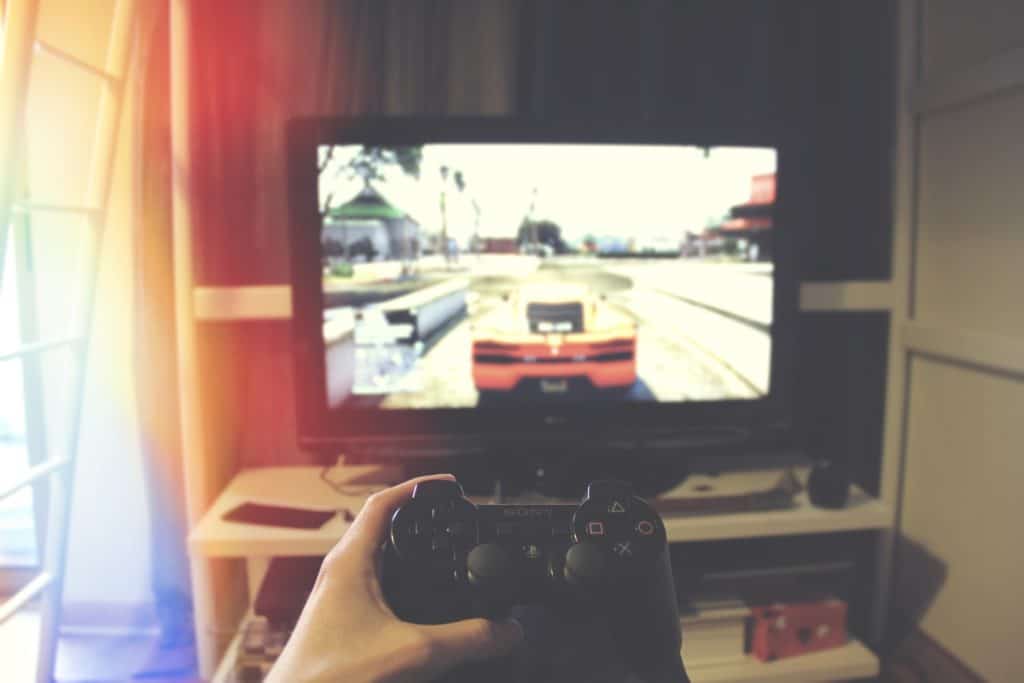
Not All Screen Time is Equal
There are many different ways to spend time on a screen and according to MIT Research Lab, they surely are not all equal.
“Rather than trying to minimize screen time, I think parents and teachers should try to maximize creative time.” says Mitchel Resnick from the MIT Media Lab
As parents we need to be very mindful of WHAT our kids are doing on a screen.
Creating vs. Consuming:
By focusing on positive, creative ways to use screens you can avoid the all or nothing mind set or the constant arguments with your kids over screen time. Find ways for your kids to be using technology to plan, build, explore and learn.
It is hard to deny that there are many, many positive things about screens.
One of my instructors I met during my Montessori Training had a great philosophy about screens. She said:
“As parents we must find ways for our kids to use screens that enhance their reality, rather than screens to help them escape it.”
So, I strongly believe our job as parents, is to help kids find these creative, engaging ways to use screens and to educate them to see the difference.
There are so many awesome things my kids have been using screens for.
We love Scratch, Outschool, KidsCookRealFood, Udemy for art classes, CreativeBug, TinkerCad, SparkleStories audio stories
Here is a list(curated by my lovely subscribers) of sites that offer creative screen time options:
- Storyboardthat
- Gus on the Go is a fun APP to learn languages
- Outschool teaches coding, animation and many other tech classes
- YouTube – How to ADHD,
- Zak George Dog Training Videos
- Mark Rober – Cool Science Videos
- iMovie
- Kahn Academy
- BrainPop
- Osmo
- Google Earth
- Nessy Learning
- Splashmath
- Duolingo
- Fabulingua
- Trisha Zemp Stop Motion Camp
Don’t see your favorites on the list? Drop me a line and I’ll add it on to the ongoing, ADHD Mom curated list.
InterActive vs. Passive
This was an interesting finding, which builds a bit on the choosing the “better” way to use a screen. I just had to share.
Researchers have even found a difference between highly interactive games (ie, the super fast video gaming) and couch potato movie watching.
Neither format seems to be so productive.
But if given a choice, there is a difference.
And it’s not what I had imagined.
Victoria Dunkley, an author who advocates for a complete screen detox, compares highly interactive video games to rather benign passive TV shows and puts them in two totally different camps. She emphasizes the stress-inducing nature of interactive screen-time; its very interactive-ness is overly stimulating to the nervous system—especially a developing one—via sensory and circadian reactions and psychological and physiological hyperarousal.
So, it would seem that a once in a while Netflix marathon is a better option for your kids than a Fortnite binge.
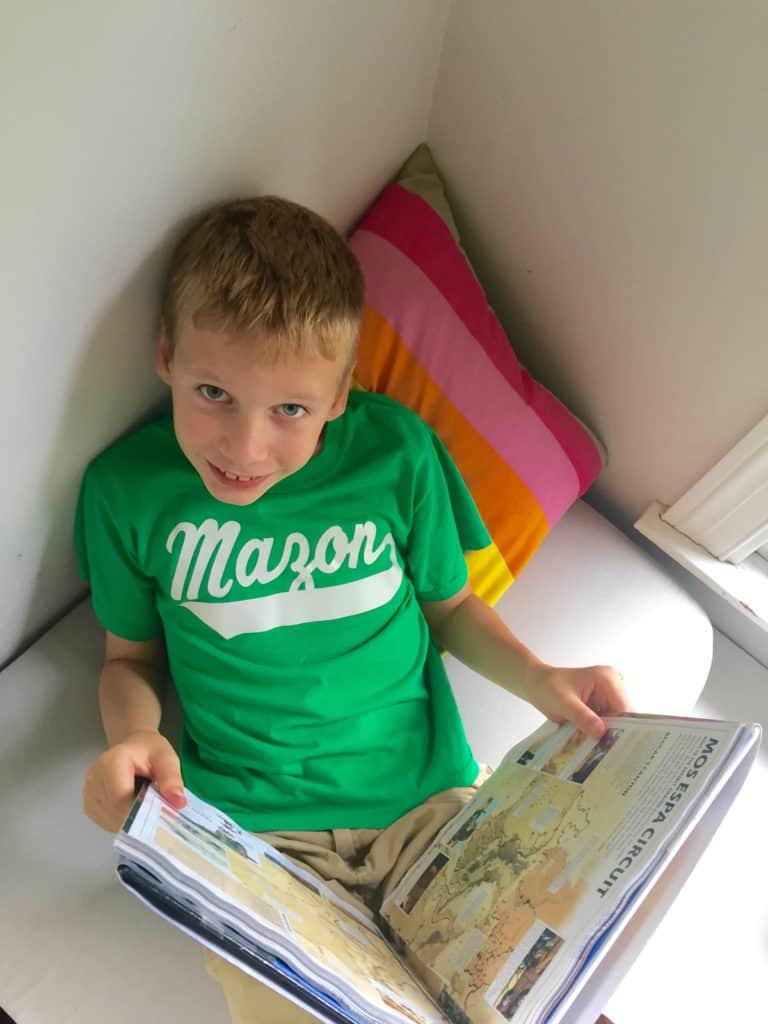
Easy ways to Manage Screen Time
We all know too much is too much….
Just like you wouldn’t want your kid to play violin all day, you don’t want them on a screen all day either, no matter what they are doing on it.
Finding what works for your kid is key. Which one of these ideas to limit screen time resonates most with you?
Limit YOUR Screen Use
Your kids learn how to be responsible screen users from YOU.
The best way to get your kids to do something and to see it’s importance is for you to do it yourself.
Some great examples of screen time rules that the whole family can abide by:
- No phones at the table,
- Phone free Sunday afternoons
- Devices kept at central charging station overnight
- Friday family movie night -great for connecting with a screen
- Devices kept in a central family area for all to see.
- All screens off and away by 7pm(or whatever time is an hour or two before bed)
This can be tricky when you work from home or do lots of work on a computer (like me!) But, the best thing you can do for you and your child is to set boundaries with YOUR screens.
Food for thought: A 2015 survey revealed that kids whose parents looked at their devices during meal and family times, felt less important than those whose parents did not.
Conversations over Contracts
I do not believe in contracts for screen time.
In my opinion contracts are just too hard not to break, especially for impulsive kids.
I just think it sets them up for failure.
Working collaboratively with your kids to come up with solutions is the best way to approach screen time limits.
Conversations over contracts.
It’s so helpful to discuss your concerns and get your kids to express their needs when it comes to screen time. (Hello, Ross Greene!)Not that you have to agree to everything they want, but letting them have a say in establishing rules will go a long way.
This will involve lots of ongoing conversations, to be sure.
Tweens and teenagers, will especially have very strong feelings about their screens and be grateful that you asked!
Make sure you voice your concerns, listen to theirs and come up with a solution that meets everyones needs.
This does not mean that you will not have the final say, at some point. But you may have to make some minor concessions along the way.
Avoid using screens as a reward
I am not a big fan of the “Do these things before you get screen time” lists that are all over Pinterest. I do not want to hold screen time up as the ultimate thing that my kid is working towards.
I also don’t want to devalue anything on that list, like exercise and reading as something my kid has to “get through” in order to have screen time.
We have our routine time for screens that stays constant with a few extra opportunities thrown in on rainy days or when families get together.
Screen time is not dependent on getting anything else done(except homework, of couse!) BUT, because we have screen time later in the day, of course my kids have had time to play outside, read a book, take a walk with me, etc.
Tell them your “why”
Be clear about why you want to limit screens or change the way your kids use screens.
Talk about your values as a parent and the things you value more than screens. Talk about wanting a more connected family, more outdoor adventures, or a fitter, healthier body.
Talk with kids about the addictive nature of the games the creators built in.
My kids constantly say, “You are really strict about screen time.” and I reply, “Thats because I know what I know.”
Make Screen Time a Routine
Routines are so beneficial for kids and teens alike. Setting up screen time to happen at the same time on a daily or weekly basis can stop whining(or worse!) in it’s tracks.
Maybe screens only come out for thirty minutes in the am and thirty minutes in the pm. Or only from 5pm to 6 pm. Maybe you give your child an amount of time that is monitored by an app (see below)and their phone only has limited capabilities after they’ve reached their limit.
Screen time routines may differ during the year and we certainly have changed our routine during different ages and stages. We are a bit more lax in the summer, but screen time doesn’t start until 4pm. During the school year there are no screens other than school work during the week and choice screen time only on the weekends.
I guarantee you will have a much easier time limiting screens if you make it part of your routine.
Use Parental Controls Sparingly
In my opinion, If you feel the need to put all sorts of controls on your kids phone, then they probably are not mature enough to handle the responsibility of having a device.
Parental controls are not okay if you are using them to constantly “spy” on your child. But they can be helpful if you want to shut off the phone at a certain time or only allow texting or calling to be done on a phone.
We use Screentime and generally have been happy with it. When my kids first got their phone in 8th grade, we set their phones to have two hours of only texting and phone calls, while not being able to access the internet at all. As they have gotten older, we’ve eased up a bit and had to let them learn how to manage things.
But we still have a shut off time at 10 pm on school nights. And when the weather is bad, I do like to check my son’s location to make sure he made it to work safely. : )
Other parenting software to check out:
Find Creative Screen Alternatives
I love the idea of finding better things for kids to be doing on a screen.
Did you see our big list above?
Invite your child to sit with you while you peruse from our wonderful list or search out your own creative ways to use screens. (If you find something good, let me know and I’ll add it to the list.)
You can definitely explain the difference to your child and show them the things you’d rather have them doing on a screen.
Perhaps you divy up screen use with more time for creative pursuits and less for passive.
I am constantly comparing screens to food and which screen activities I consider to be junk food(mostly highly interactive video games, mindless Youtube surfing) and which I consider to be part of a healthy lifestyle(creative and educational pursuits). We could not exist and live a healthy life eating only junk food. It’s a once in awhile thing.
Please don’t think that I am demonizing video gaming — when my son is talking to friends online and playing at the same time, it’s infinitely better than hours and hours of solo play.
Some would argue that games are teaching problem solving skills, too. I think that’s probably true. But again, not for hours upon hours or at the expense of other, skill building activities.
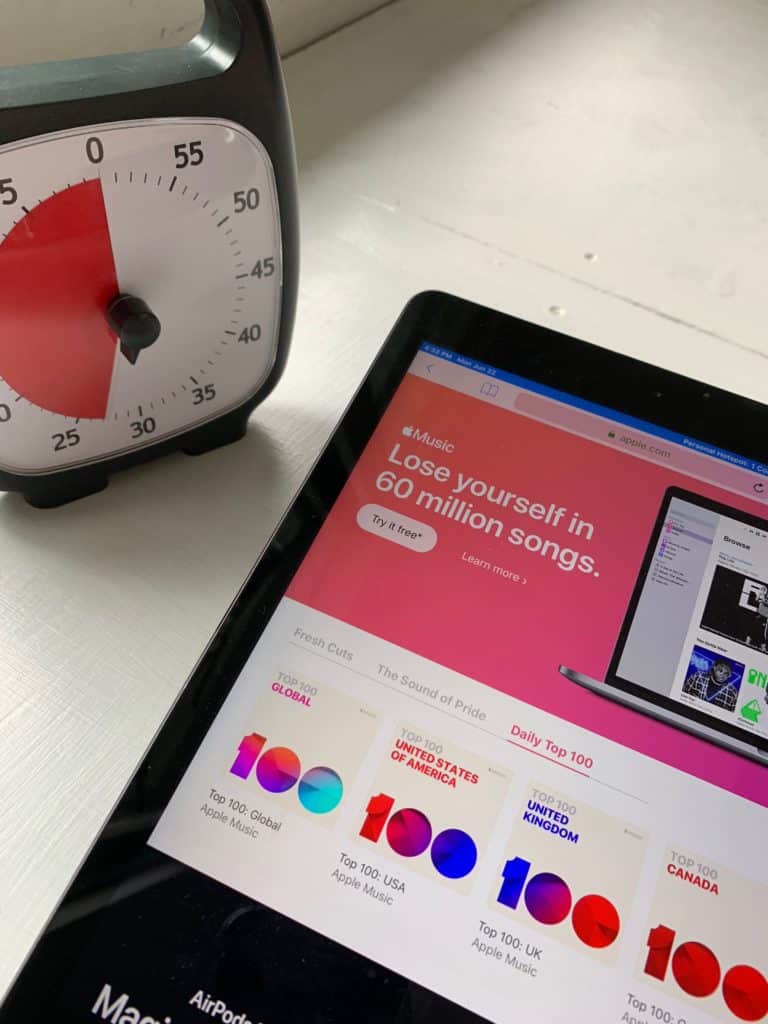
Use a Timer
It can be extremely helpful to use a timer like, the Time Timer to set the boundary of time for video games. When the timer goes off they are done.
It’s like the timer is setting the boundary, not you!
Related: The Best Timer for ADHD
Play With Them
Connecting over technology can be a really great thing to bring you closer to your kid. Showing interest in what they are doing on a screen might surprise them! Sit and watch them play, or better yet, try to play a video game with them.
Steer them in the direction of something more creative like taking an online class together, searching for a new recipe and then making is together.
Learn something new together. Help your kids with their research homework or watch a documentary as a family.
This tip is less about limiting and more about connecting – which has nearly infinite benefits!

Prioritize Family Connection
Edward Hallowell, one of my favorite ADHD docs talks about “the other Vitamin C” (Connection) being the best anecdote to ADHD. An amazingly beneficial way to get your kids off screens is to plan fun family activities.
Work with your entire family to create a bucket list of family favorites for whatever season you are in. (Yeah! Summer!) Planning screen free family activities can go a long promote togetherness and connection.
It’s important that everyone has a say in this process and that kids learn to adjust to others preferences – They may not love every suggestion, but it’s important to learn to do things because it makes someone else in the family happy. Even with a tween and a teen, we are still working on this!
Also note, that it might take some work on your part to get everyone out of the house. Grumbly teens may be resistant at first, but will most likely come around as the day unfolds. Ask me how I know…..
Our favorite screen free activities include mini golf, eating at an outdoor cafe, taking hikes at the local nature center, picking mulberries and making jam, spending an afternoon at our favorite second hand bookstore, heading to the beach, getting 10 bucks to spend at the art store, visiting a car show, or traveling to a not so local museum.
It’s often easier if you plan an activity for the whole family – hard to leave one kid behind and easier to enjoy if you are modeling the behavior.
Find Other Indoor Activities
As a self-confessed techno phobe when my kids were younger, I can honestly say that I was super good at finding awesome ways to keep my two boys busy, busy, busy with lots of cool indoor activities.
I wrote an entire post about really great indoor activities for ADHD kids HERE. So I am not going to repeat all that great information in this post.
But in a nutshell, the more open ended the toy or activity is, the more likely your kids will be to engage in deep and meaningful play.
I am sure everyone has a moment where you have witnessed your kids playing with a cardboard box for longer than you ever thought possible! The more possibilities a toy has, the more it will bring out your kids’ creativity. Think plain wooden blocks, simple dolls, musical instruments, cars, art supplies, blank journals…….
Related: The Best Indoor Activities for ADHD Boys
Benefits of Limiting Screen Time
One thing to note, the effect of limiting screen time may not so immediate, as one researcher from Iowa State notes. As with many things, it might get worse before it gets better.
As you begin to limit screens, over time, you’ll begin to see lots of benefits like these:
- Better academic performance – Less time on a screen can mean more time for academic pursuits. Teenagers academic performance went down for each extra hour they spent on a screen. So less time on a screen means better overall school performance.
- Better overall behavior – Getting kids off the dopamine rush of screens and interacting with family and friends can make them less likely to act out in aggressive ways, says this study.
- Better sleep – Many studies sight that the more kids are on a screen, the less sleep they get. This alone can lead to a host of issues. Lessening screen time can allow your kiddo to get more brain boosting, restorative sleep.
- Reduced Eye Strain – Computer Vision Syndrome is a real thing. Looking at a screen closely can have degenerative effects on your vision as well as give you dry eyes and make you feel exhausted.
- Fewer headaches – Kids won’t be spending so much time hunched over a device, easing up on the neck and back muscle strain.
- Increase in prosocial behavior/Decrease in aggression -One Iowa state study found that limiting screen use can have a hue ripple effect, one that can even be seen seven months later. Parents saw an increase in prosocial behavior and a decrease in aggression.
- Weight reduction It serves to reason that spending less time on a screen would put kids at a lower risk for gaining weight.
A fascinating find: Certain screen free activities seem to negate the issues brought about by screens, says one Canadian study(However, do note that the study is based on two hours per day of screens – an amount much lower than the average). Rigorous exercise and good sleep has been shown to significantly lower the negative effects of screens.
Easy Fixes Even if They Are On a Screen.
Let’s face it, we can’t get screen time down to zero, nor do we want to. I make sure my kids are as safe as they can possibly on a screen and do these things:
How to reduce eye strain and get better sleep
The blue light emitted from screens can cause your body to think its day even when it should be making those wonderful sleep hormones.
Before purchasing anything: Check your device for a “night shift” setting that will automatically turn your screen to warmer tones.
Blue light blocking lens coating – If your kids wear glasses, ask about a blue light blocking coating that can be applied to their lenses. Then they are always protected!
Blue light blocking glasses – You can also purchase glasses to wear as the sun goes down to help keep your body getting itself naturally ready for a good nights sleep. These are for kids and these are for teens/adults.
Blue blocking screen cover – If glasses are hard for your kid to wear, try covering their screen with a cover that blocks out the blue light.
Weighted blanket– This has nothing to do with screen time, but a weighted blanket has been so helpful for us to soothe my kids into deep slumber.
Related: The Best Weighted Blanket for ADHD
Protect your family from EMF’s
Labelling the electromagnetic exposure kids get from devices as “a possible carcinogen” is enough for me to not only be cautious, but to do something about it.
EMF Defender Shield – This company is legit and has awesome products. We have the ipad cover because my kids read with the ipad on their lap and sometimes spend hours reading.
Placing a table between you and your device goes a long way to protect from EMF’s which is why we don’t have anything for my kids laptops….they are usually at a table (screen out for all to see!) when they are using one.
EMF blocking lapdesk – If your kids work on their lap often, this will do the trick!
Parents Get the Last Word
I didn’t mean to save the heavy stuff for last….but here it is.
There is a bit of a caveat when it comes to screen time – I believe that you get the last word. You know if screens are becoming a danger to your kids.
Remember, their brains are still developing and we are responsible for their well-being.
You may have to put your foot down, take the phone away for awhile, turn off the devices, etc….your kids may hate you for it. It’s okay. You are doing your job.
This TedX talk by Cyber Cop Richard Wistocki is a must see. He was a guest speaker at my son’s Montessori school and it changed the way I parent my now, cell phone toting son. This talk is tough to listen to and is for adults only. But, he is on the front lines everyday and speaks the truth.
There are so many increased risks with using technology. We have to be aware of them and vigilant in our quest to protect our children.
Digital resources bring serious dangers as well. There are rising concerns about mental health issue and increased depression among youth who spend too much time on screens. Not to mention dangers such as sexual abuse, child pornography, and bullying that are intensified by the Internet nowadays.
Obviously we all want our kids to stay safe and away from cyber predators. But the truth is it’s not as easy as it sounds. Parents must be vigilant about not only talking with their kids about staying safe, but they must check their kids devices on a regular basis.
You are responsible for your child.
Screen Resources that are really helpful
Fairplay for Kids – This website, run by the Campaign for a Commercial Free Childhood, is focused on getting kids outside and off screens. They have an awesome page of videos for parents to watch, blog articles and just so much current information for parents who are concerned about their kids and screens.
Screenfree Parenting Blog This was one of the first sites I came across and is amazing for kids 10 and under. Lots of research and screen free ideas!!
Creating a Tech Healthy Family, by Andrea Davis – this is a workbook of sorts on how to talk to your kids about screens, how to have conversations with them about their screen use and how to find the time to connect more and prioritize family time. Even with teenagers, this was helpful for me to back track a bit and have conversations with my kids that I wish I’d had 5 years ago. It’s never too late!!
Screenwise, by Devorah Heitner was the first book I read about screens and kids after I saw her speak at our school district. She has loads of practical advice about setting limits and raising kids who are smart about their screen use.
The Tech-Wise Family, Everyday Steps to Putting Technology in it’s Proper Place by Andy Crouch has great ideas for families with teens. I got the idea to have screen free zones, like in the car, that I firmly put in place after reading this. Now the car is a time for connection and even boredom because no one is on their phone!!
Screen-freeParenting.com – I loved this site when my kids were little. They offer lots of ideas for alternatives to screen time. Great for the 8 and under set
Unsure what APPs can be harmful and dangerous for young phone users? This list is a must see.
I love feedback! This post is filled with lots of thought provoking material. Hop on over to Instagram to follow the daily discussion.

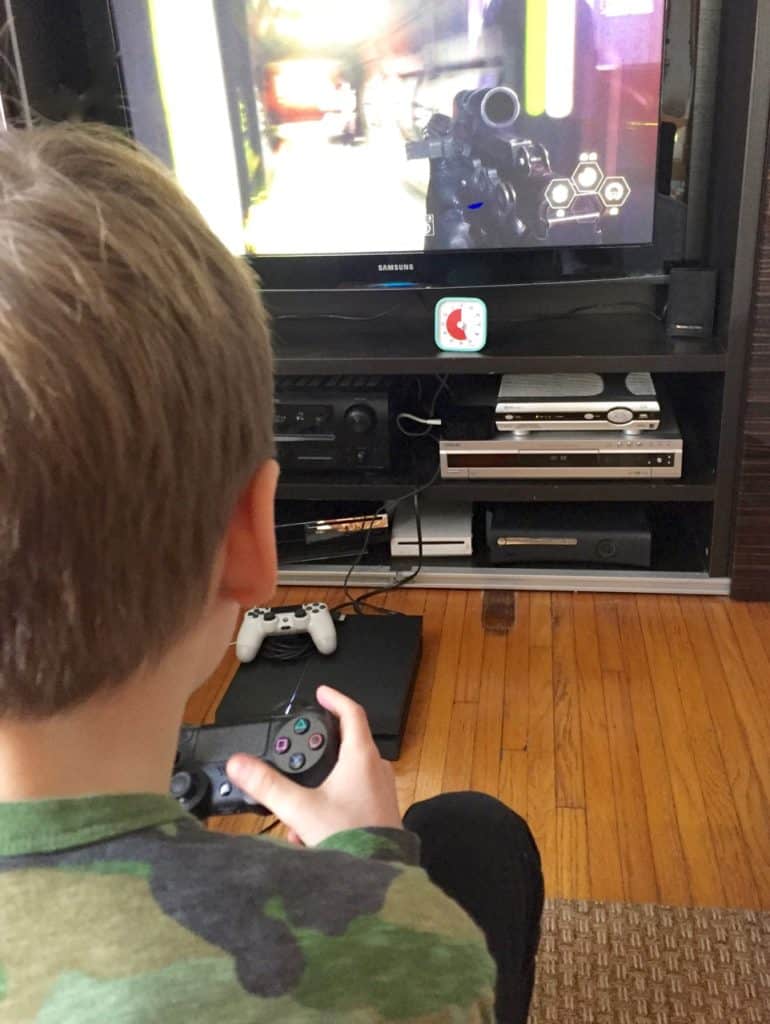
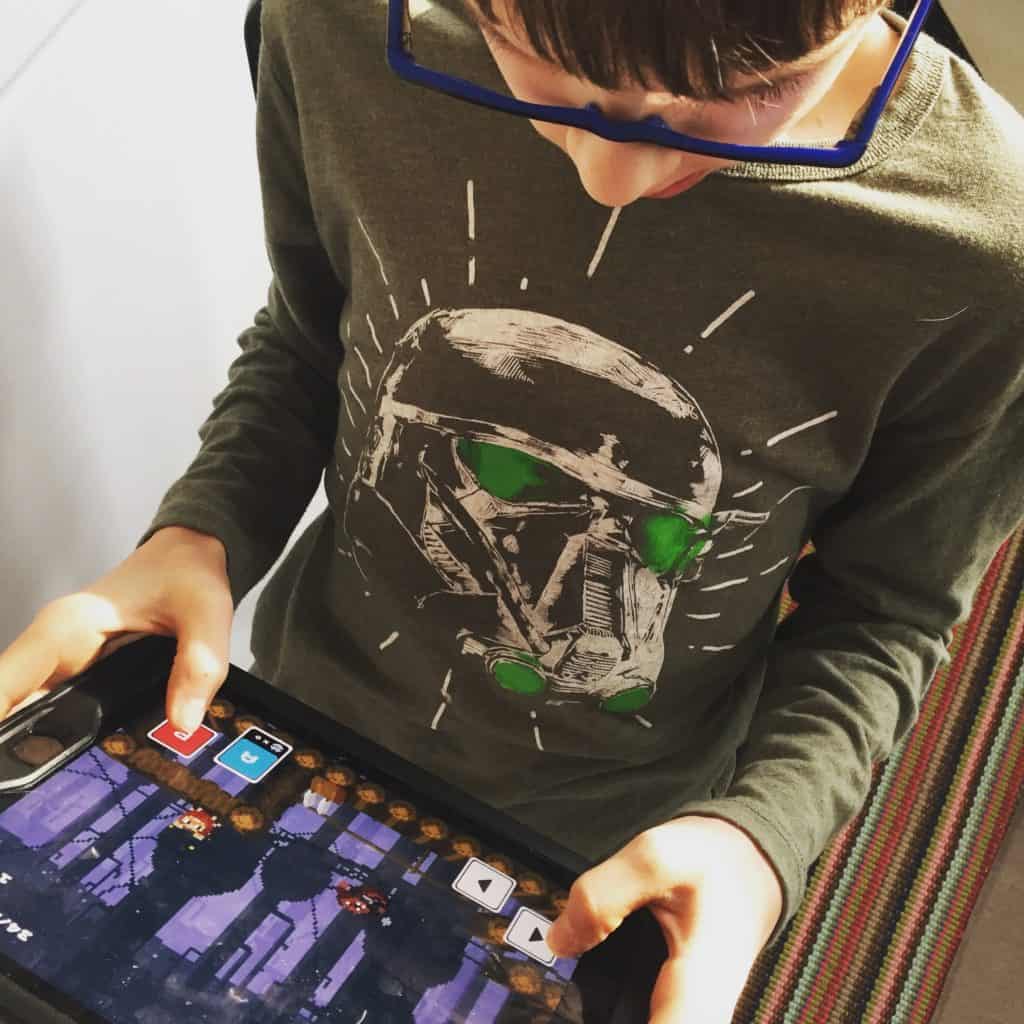
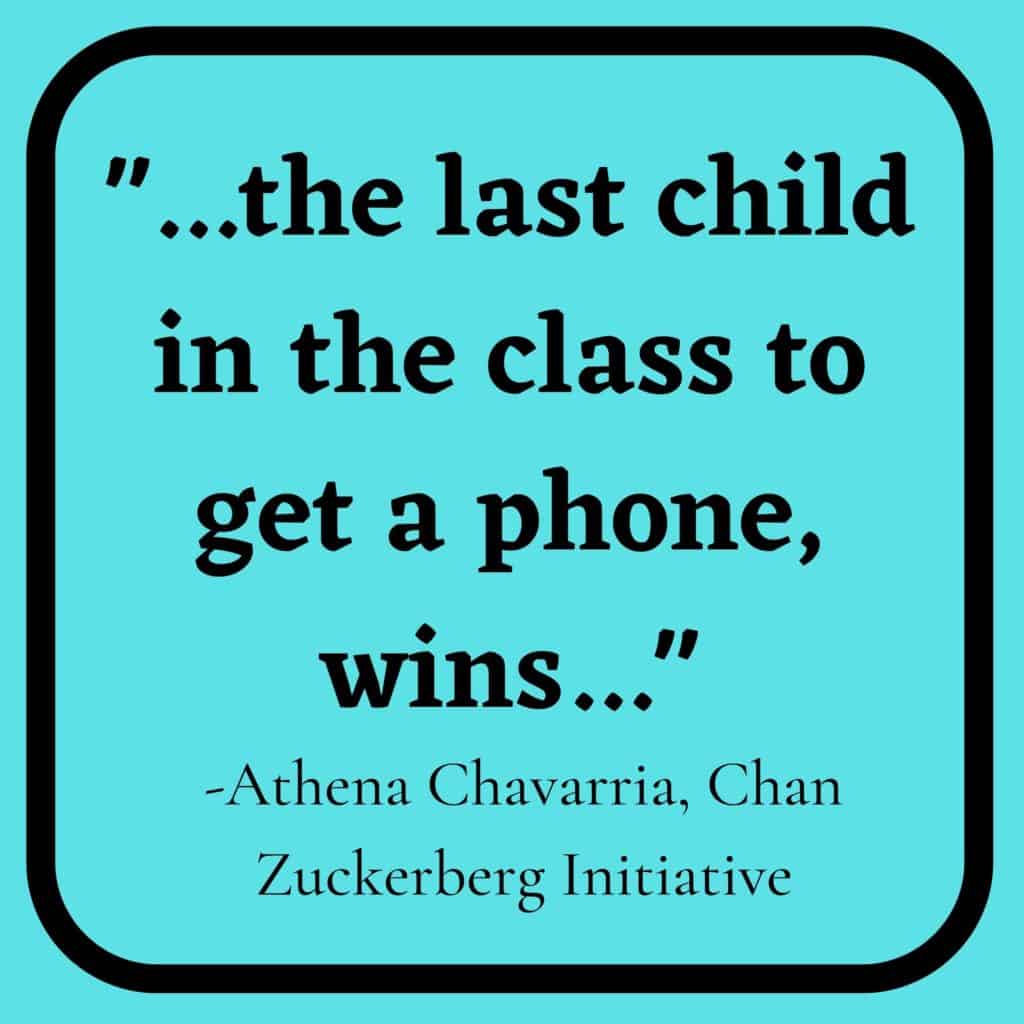
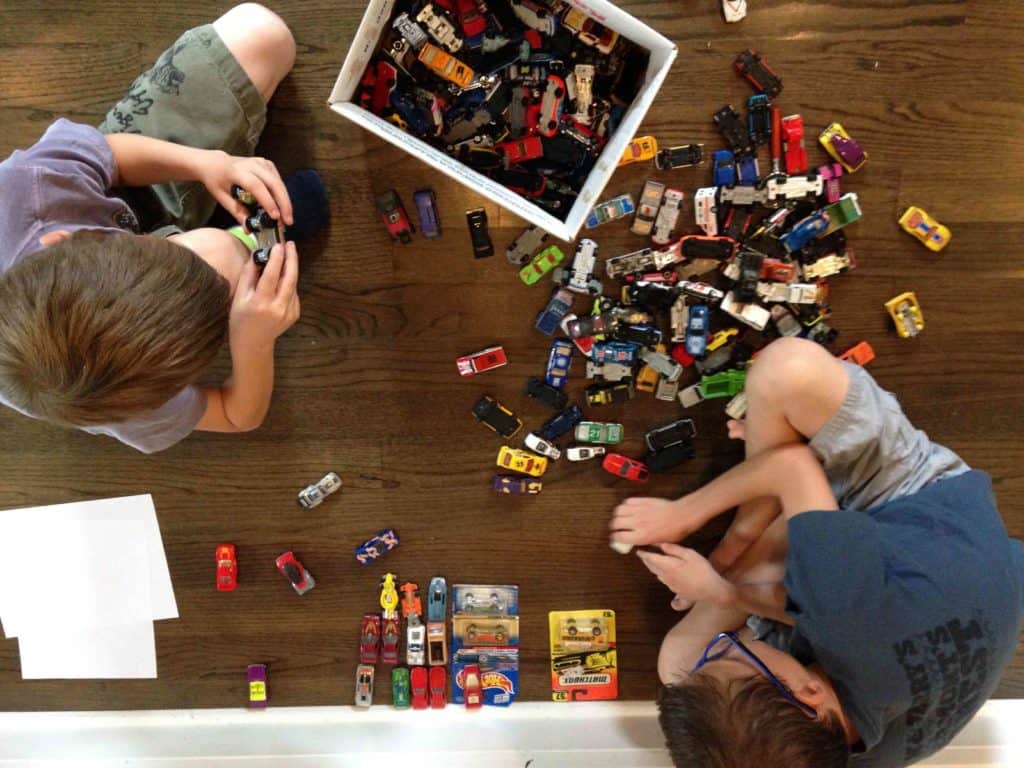





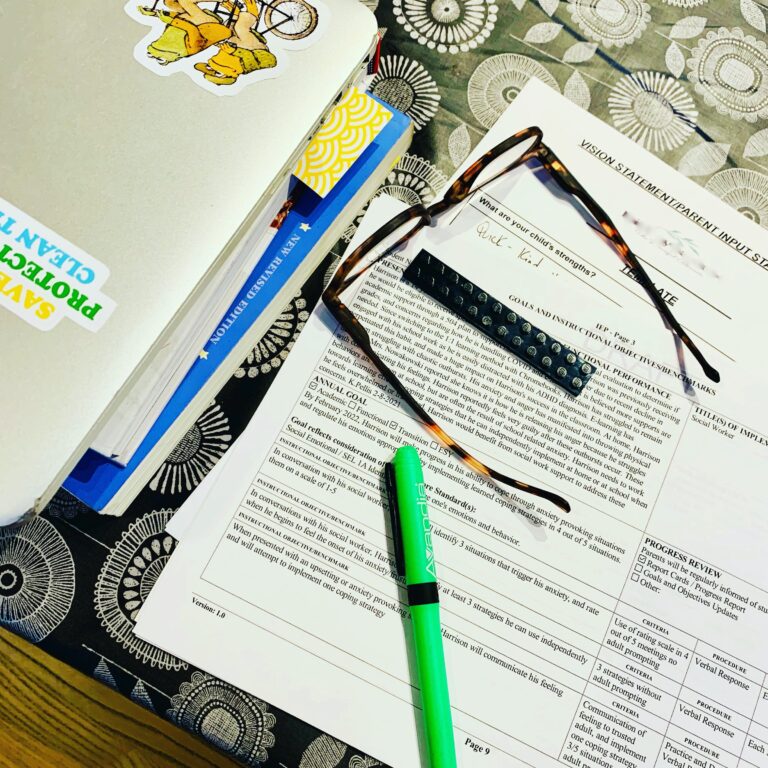
This was such a great article. My son is 5 & is already starting to want to play games & talk about games all the time. I think having a timer would be a great tool for us. & Limiting my own screen time is something I need to do, how can I tell my kid he needs less screen time while looking at my phone! Lol. Thank you for all the info & links!
It’s such a difficult subject!! I just found a website called Fairplay which advocates for kids and low screens…they have great videos to watch!! I’m adding to the post, but wanted to let you know. So good you are on it now!!